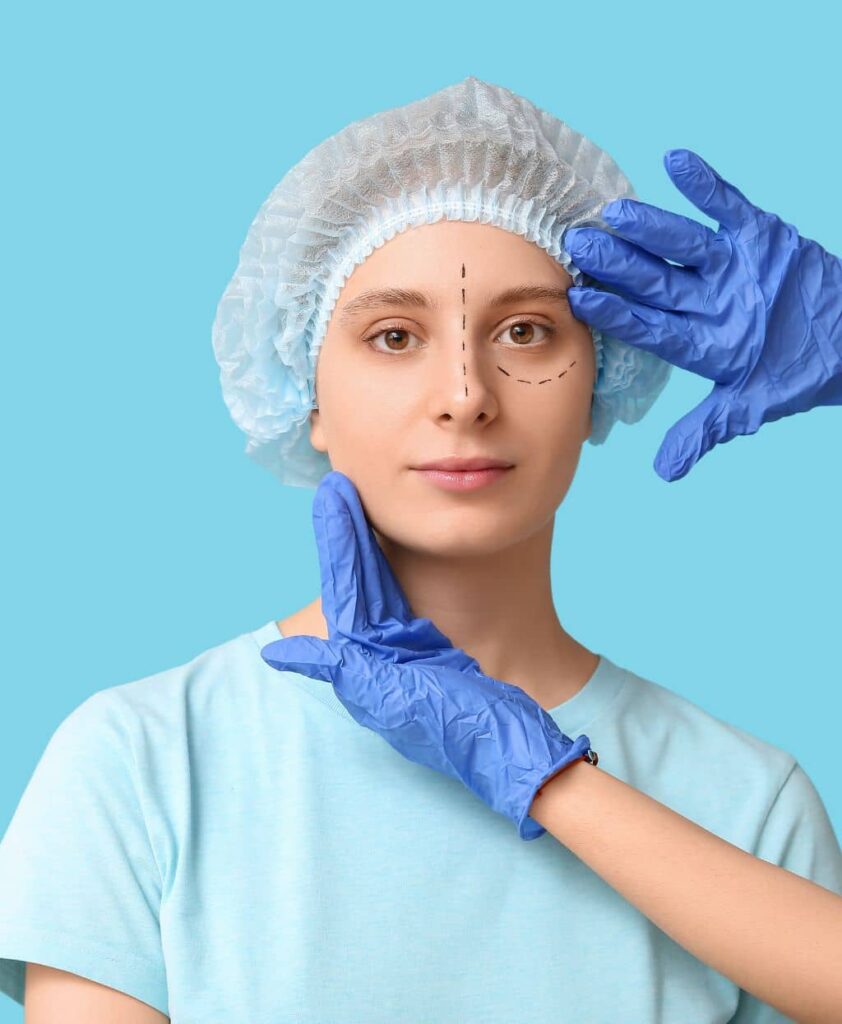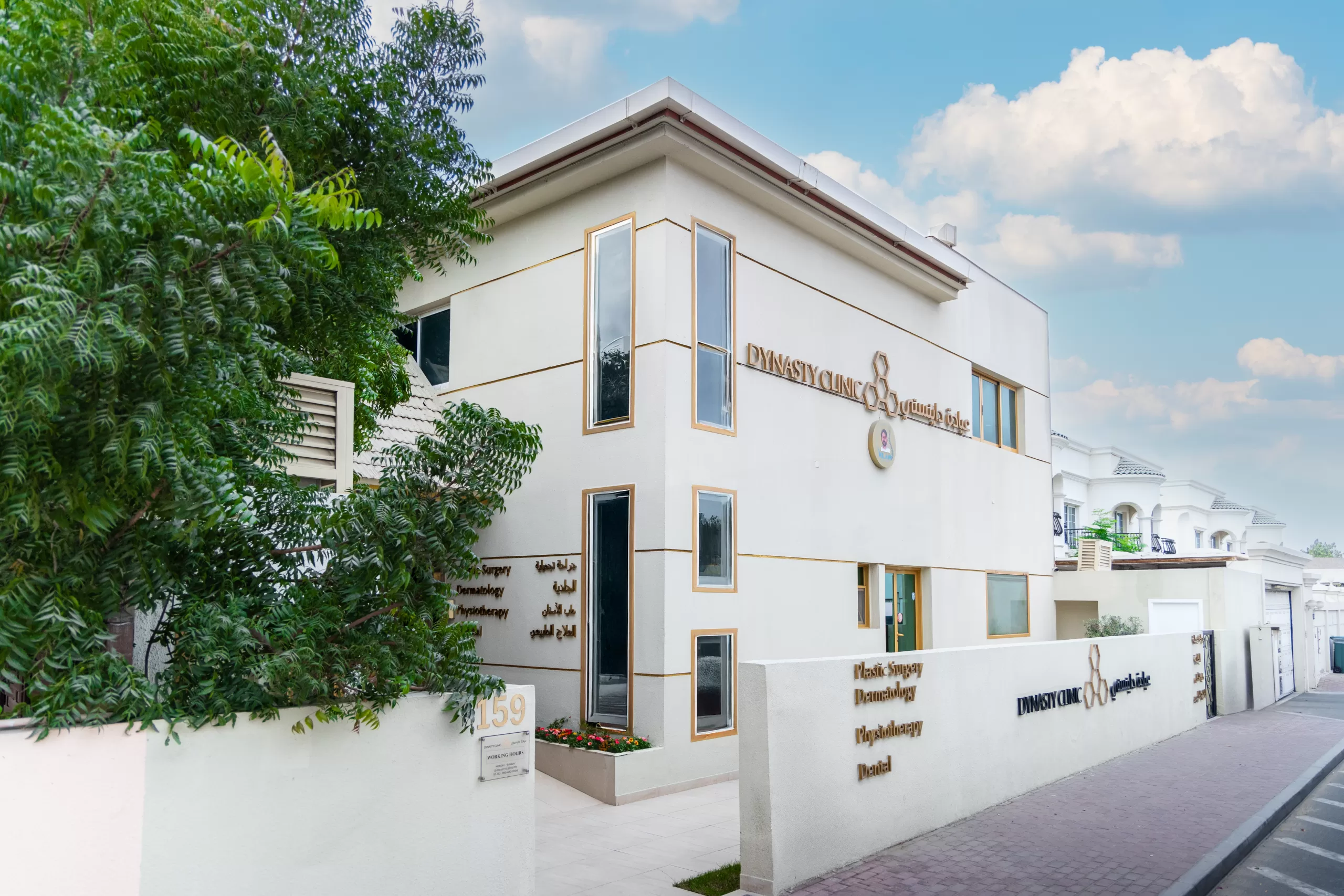Dynasty Clinic offers Blepharoplasty to rejuvenate the eyes by removing excess skin and fat from the eyelids. Our experts enhance your natural appearance, giving a more youthful and refreshed look.

Dynasty Clinic offers Blepharoplasty to rejuvenate the eyes by removing excess skin and fat from the eyelids. Our experts enhance your natural appearance, giving a more youthful and refreshed look.
Dynasty Clinic offers Blepharoplasty in Dubai, a modern cosmetic procedure to enhance the appearance of your eyelids and rejuvenate your look. Whether you want to reduce sagging, puffiness, or excess skin on the upper or lower eyelids, Blepharoplasty is the perfect solution. This procedure restores a refreshed, youthful appearance and can even improve vision if drooping eyelids obstruct sight. It is safe, precise, and designed for your individual needs. Our experts provide personalized care to ensure natural looking results with enduring effects. Book your consultation today and discover the benefits of Blepharoplasty surgery in Dubai, UAE!
Blepharoplasty is a surgical procedure designed to remove excess skin, fat, and muscle from the upper or lower eyelids. It helps reduce puffiness, sagging, and tired looking eyes. The surgery creates a more youthful, refreshed appearance and can improve vision in cases where drooping eyelids interfere with sight. Dynasty Clinic offers advanced Blepharoplasty with expert care, ensuring safe, natural results and personalized treatment plans.
Blepharoplasty involves making precise incisions along the natural eyelid folds to remove or reposition excess skin and fat. For upper eyelids, sagging skin is lifted, while for lower eyelids, puffiness and under eye bags are corrected. The procedure enhances eyelid contours, smoothens wrinkles, and restores a more alert, youthful appearance. Our surgeons focus on achieving balanced, natural results while minimizing visible scarring. The surgery can be performed under local or general anesthesia, depending on individual needs.

Blepharoplasty is ideal for anyone wishing to improve eyelid aesthetics or address vision obstruction. Our specialists evaluate your eyelid structure, medical history, and aesthetic goals to design a personalized treatment plan.
Dynasty Clinic offers advanced blepharoplasty procedures that provide multiple benefits, helping you look and feel your best:
Blepharoplasty is not recommended for individuals with uncontrolled medical conditions, active eye infections, or severe dry eye syndrome. Those with unrealistic expectations or recent facial surgery should consult a specialist first. A professional assessment ensures safety and the best results.
Patients can expect lifted, smoother eyelids with reduced puffiness and sagging. Eyes appear more alert and youthful, and in some cases, vision is improved. Results are durable with proper care and maintenance.
Blepharoplasty surgery typically takes 1 to 3 hours, depending on whether upper, lower, or both eyelids are treated. Anesthesia type and complexity of the procedure may slightly affect duration.
Most patients experience mild swelling or bruising for a few days. Normal activities can usually be resumed within a week, while full healing and final results are visible after several weeks. Proper aftercare ensures smooth recovery and the best outcomes.
Our team of skilled surgeons specializes in delivering exceptional Blepharoplasty results. By combining advanced surgical techniques with precise methods, we ensure each patient achieves natural, youthful eyelids. Our commitment to patient care and satisfaction makes us a trusted choice for eyelid surgery.
For more information or to schedule a consultation, contact us today. Refresh your eyes and achieve the youthful, alert look you desire with the guidance of our expert team.
More than 250 five-star reviews on Google

Trustindex verifies that the original source of the review is Google. Best clinic in DubaiPosted onTrustindex verifies that the original source of the review is Google. Highly recommend ❤️❤️amazing clinic and staffPosted onTrustindex verifies that the original source of the review is Google. The staff is very professional and the doctors are excellent. Not commercial.Posted onTrustindex verifies that the original source of the review is Google. Best clinic in Dubai, I felt well taken care of from first step Highly recommended 👌Posted onTrustindex verifies that the original source of the review is Google. Amazing clinic with professional caring team Clean , modern and very organized highly recommended ♥️Posted onTrustindex verifies that the original source of the review is Google. دكتوره سيما وايد شاطره وأيدها خفيفه 💖💖💖💖💖💖💖Posted onTrustindex verifies that the original source of the review is Google. Dr. Seema is truly exceptional in her field. Anatomically, she has this remarkable ability to pinpoint exactly where to go and what steps to take, guiding anyone through the intricacies of the human body with ease. When it comes to skin, she can describe not just the surface but the dimensions and texture in a way that makes everything clear. Her depth of understanding and the sheer amount of knowledge she brings to the table really make her a pioneer in her specialty.
The surgeon makes precise incisions to remove excess skin and fat from the eyelids. This shapes the eyes for a youthful, refreshed appearance with little visible scarring. The procedure is carefully monitored to ensure safety and comfort. Patients typically feel little discomfort during surgery and are closely observed throughout.
No, the procedure only targets excess skin and fat, leaving the underlying muscles intact. Your natural expressions remain unaffected, ensuring subtle and natural-looking results. The surgery enhances your eyes without altering the way you blink or smile. This allows for a refreshed look that still feels natural.
Initial improvements are visible within a few days as swelling and bruising begin to subside. Full results appear gradually over a few weeks once the healing process is complete. Most patients notice a smoother, tighter eyelid contour. Enduring benefits continue to improve with proper aftercare.
Most patients experience little discomfort during the procedure, thanks to local or general anesthesia. Mild swelling or soreness may occur afterward but typically resolves quickly. Pain is manageable and short-lived, allowing patients to resume normal activities. Our specialists provide clear aftercare instructions to ensure comfort throughout recovery.